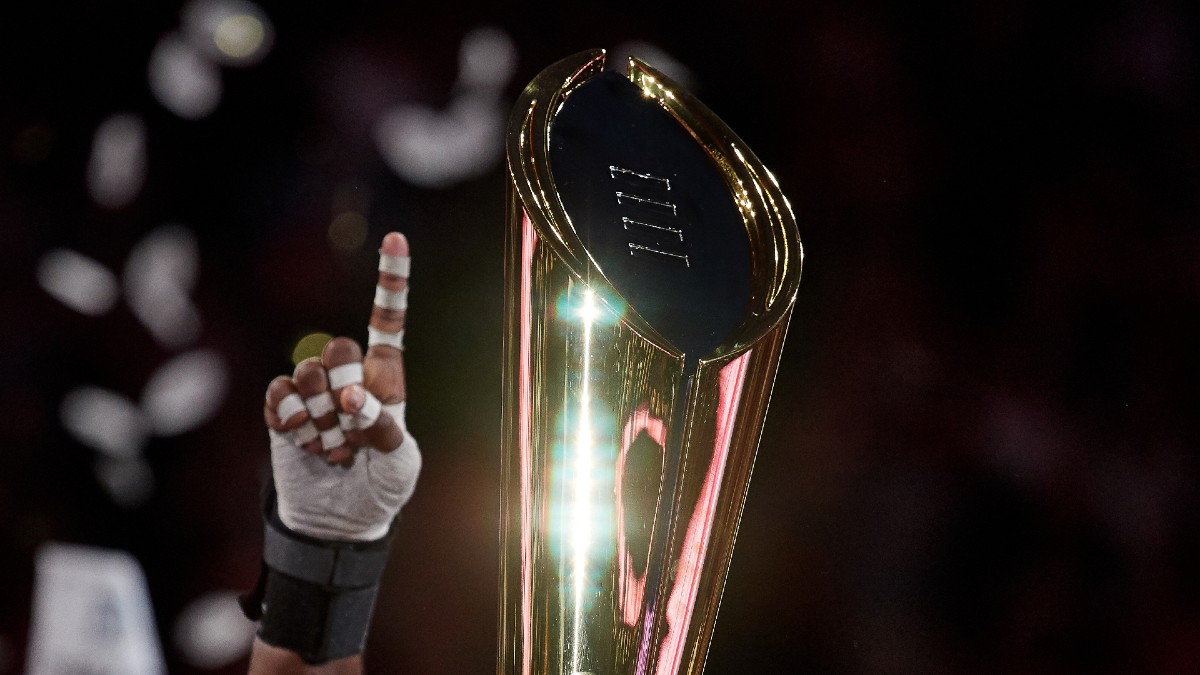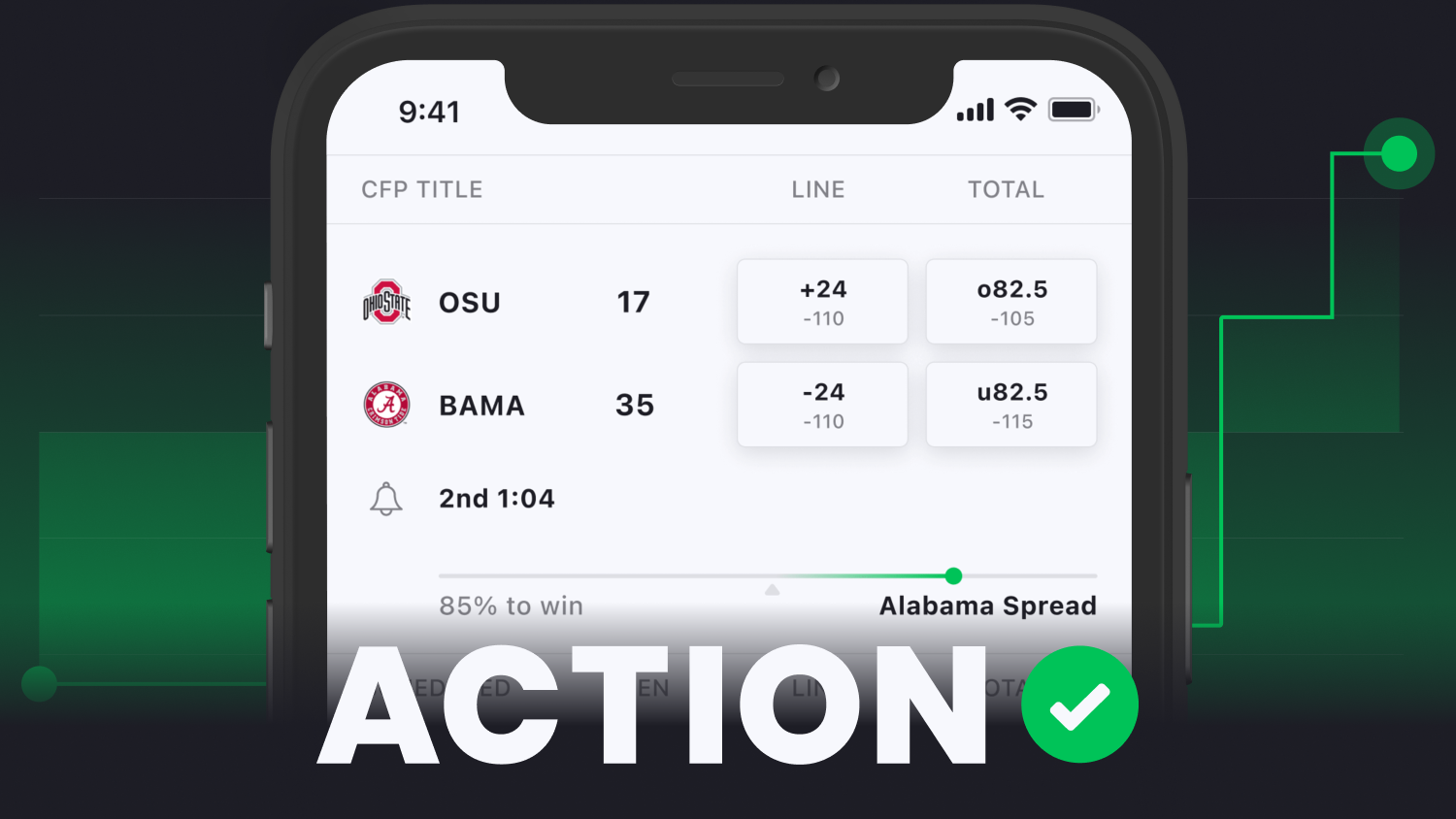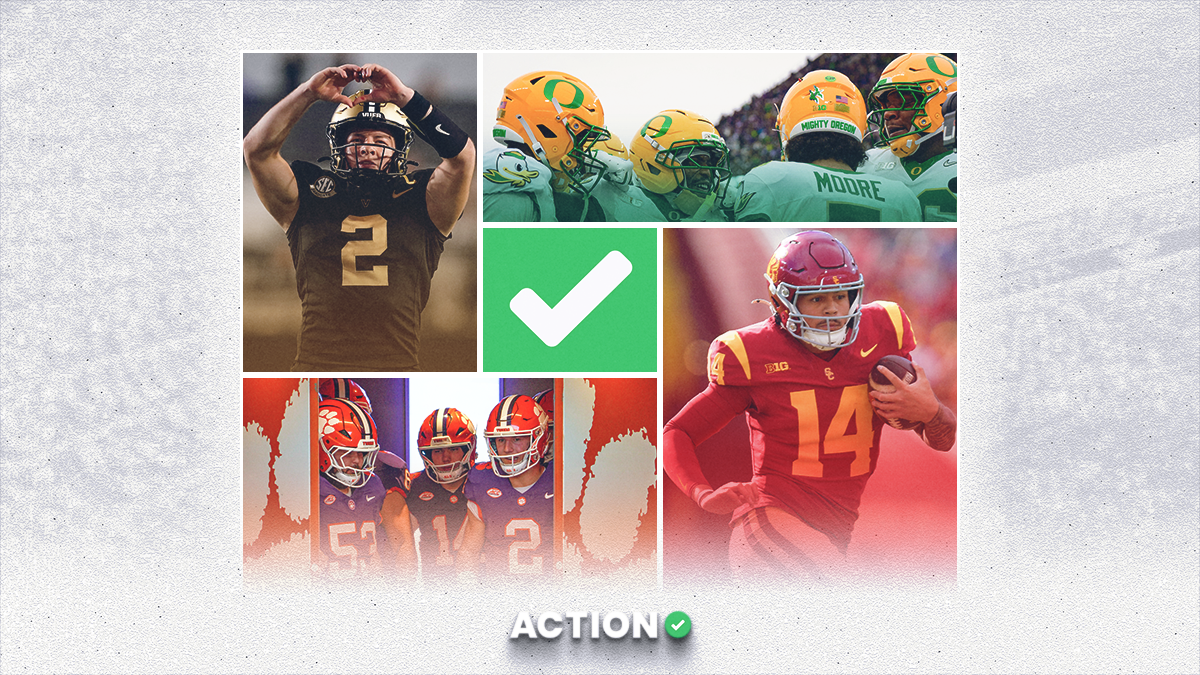We’re less than a month away from the return of EA’s college football video game series, EA Sports College Football 25, proudly bearing the EA Sports logo and developed by Electronic Arts.
Impassioned fans of the game have kept it alive for the past 11 years, with roster updates, game hacks and never-ending online dynasties. Their work was not in vain, and to celebrate their dedication and the return of game, we’ve put together a college football content collection.
So far, we’ve touched on the stars that gamers missed out on playing with, the offensive innovations that have hit college football over the last decade, the unforgettable NCAAF games and bad beats, and so much more.
- Pontiac College Classics 2.0
- Top Moments in Gambling History
- Top 5 Players We Would Have Loved Playing With
- Offensive Innovations
- How the College Football Landscape Has Changed (Today)
Last week, I detailed the explosion of the RPO and its impact on modern offenses. But this week, I’m zooming out even further. Beyond the play on the field, so much has changed in the world of college football in such a short amount of time.
Growing up in the 1980s and 1990s, college football’s traditions drew me in more than anything. The Rose Bowl, the marching bands, the triple option, they were all steeped in tradition. But college football is changing so quickly that the idea of maintaining tradition seems downright quaint.
How much has changed? Let’s list the ways, along with how they'll be featured in the game.

Transfer Rules in EA Sports College Football 25
In the summer of 2013, there was a handy PDF you could download from the NCAA. It was entitled “Transfer 101,” with a sub-header reading, “Basic information you need to know about transferring to an NCAA college.”
It offered answers to questions about eligibility and the dreaded “academic year in residence,” which essentially required student-athletes to sit out a season if they were transferring between schools.
Now, there were exceptions — some automatic, and others via transfer waivers. For instance, starting in 2011, if you graduated from your school, you qualified as a graduate transfer and could play immediately without sitting out a season.
The NCAA also approved close to 50% of all “hardship” waivers, for players with special circumstances. These included situations in which a player wanted to transfer closer to home to tend to a gravely sick family member.
But even with these carveouts, player movement was far from free. For every Russell Wilson transferring from NC State to Wisconsin as a graduate transfer, there were hundreds of players stuck sitting out a season in pursuit of a new home.
Fast forward to today, and it’s as easy to transfer as it is to sign out of high school. Thousands of players hit the transfer portal each year, no longer being required to sit out a season.
For instance, Ole Miss signed 24 transfers in its 2024 class alone. Rewind 11 years back to 2013, and Ole Miss’ entire roster featured just six transfers from other FBS programs, with just two receiving immediate eligibility.
That’s how much roster construction has changed in college football over the past 10-15 years.
This dynamic is also reflected in EA Sports College Football 25, where managing transfers is a key part of the Dynasty mode. As a gamer, you’ll now need to recruit on three fronts simultaneously.
That means recruiting from the high school ranks, persuading players to transfer to your school and keeping your current players out of the transfer portal.
The difficulty surrounding this new multi-dimensional recruiting reality was credited with the surprising retirements of Nick Saban and Villanova’s Jay Wright on the hardwood.

NIL in College Football
UCF placekicker Donald De La Haye once had to choose between monetizing his own YouTube channel or losing his eligibility. Given the choice, he told the NCAA that he felt their terms were unfair, and as a result, he lost his scholarship and eligibility, never participating in another college football game.
Countless other players were suspended over receiving money from agents, profiting from autographs, or taking monetary handouts from boosters.
If you paid close attention to this dysfunctional ecosystem, it was clear that everyone other than the NCAA — players, coaches, boosters and agents — felt the system was unfair.
Coaches who were making millions of dollars conceded that players deserved a taste. Whether that was from revenue sharing or endorsement deals, there was mounting pressure on the NCAA to clear the way for student-athletes to start making money.
In the end, a series of lawsuits paved the way for new rules. Players can now benefit from their name, image and likeness. The NCAA continues to challenge this largely unregulated market, but it’s been loss after loss for them in court.
While it’s nice that players can finally get their fair share on the open market, like starring in national commercials, it’s had a seismic impact on recruiting.
The original thought was that players in the vein of Tim Tebow, Johnny Manziel and Joe Burrow would get money thrown at them by media-savvy businesses. But the idea of rewarding on-field collegiate success has quickly morphed into a speculative market.
Yes, star players are being offered millions to stay at their school or to transfer to another, but the biggest surprise has been the financial inducements being offered to high schoolers.
Collectives have formed at nearly every FBS school and have funneled money into the recruiting process so effectively that without their financial might, any roster would fall apart in a single offseason.
Cash is now king in college football, and you can trace a direct line between the collectives and final recruiting rankings. Of the top 10 classes in 2024, according to 247Sports, five had top-10 collective money behind them.
In EA Sports College Football 25, players can experience these dynamics firsthand.
In addition to NIL in Dynasty mode, players can also balance student-athlete life in Road to Glory, managing their weekly schedule, GPA, image and earning coach trust to get more playing time, all while aiming to build an unforgettable college football legacy.


Coaching Staff Salaries
If you think NIL money has gotten out of hand, you may want to skip this section because college coaching salaries have exploded in the past 15 years.
When the game last hit shelves in the summer of 2013, only three college football coaches were making north of $5 million annually: Alabama’s Nick Saban, Texas’ Mack Brown, and believe it or not, Arkansas’ Bret Bielema.
Today, 37 coaches, including Bielema at Illinois, make north of $5 million per season, with the new “big boy” salary threshold sitting at $9 million per season. Twelve coaches are making $9 million or more in base salary, and only Kirby Smart and Dabo Swinney have won a national title out of that group.
If the salaries themselves seem exorbitant, allow me to explain the buyouts that come with them.
Most of these mega contracts are nearly guaranteed, ranging from 70% to 100% guaranteed. So, when Texas A&M fired Jimbo Fisher following a tepid 45-25 record over six seasons, they paid him $77.5 million in a buyout. That’s not a typo.
For perspective, Bobby Bowden was the sport’s first million-dollar coach. When the legendary coach passed away in 2021, his estimated net worth was $14 million. So, Texas A&M paid Fisher 5.5 times that amount to not be its coach.
This is one way to frame the argument that college football is big business in every sense of the word.
With the business of coaching also taking off, it's worth noting that players will have the option to hire and fire offensive and defensive coordinators in Dynasty mode, which wasn't a choice in NCAA Football 14.

College Football Playoff
I assume some of our readers faintly remember the pre-BCS era of college football.
For a quick refresher, there was no guarantee that the top two teams in the country would end the season squaring off on the same field. In fact, between 1945-91, the top two teams only met in a bowl game eight times.
There were a few “de facto” national title games between teams ranked in the top four, with a win by either school locking up a national championship. But even with those added to the mix, it was more likely than not that the title game was decided by voters and not by a single on-field result.
By 1992, there was a glimmer of hope that this longstanding championship problem could be addressed. In the wake of back-to-back AP/Coaches poll splits for No.1 in 1990 (Colorado/Georgia Tech) and 1991 (Miami/Washington), the “Bowl Coalition” was formed.
Its goal was simple: provide bowl game selection flexibility to increase the likelihood of 1-vs.-2 matchups.
They got buy-in from every major conference with the exception of the Big Ten and Pac-10, which wanted to maintain the sanctity of the Rose Bowl. Minor conferences like the Big West, MAC and WAC weren’t even consulted in the process and were shut out from major bowl bids.
The Bowl Coalition was an instant success and created 1-vs.-2 matchups in 1992 and 1993, but 1994 highlighted its lone weakness.

Penn State and Nebraska both finished the regular season undefeated, but due to the Big Ten’s preference to play in the Rose Bowl, they were unable to meet on the field. Nebraska would win the Orange Bowl, 24-17, over No. 3 Miami, while Penn State routed No. 12 Oregon, 38-20. Two perfect seasons resulted in just one national champion in the Cornhuskers.
The Bowl Coalition got a facelift in 1995, rebranding as the “Bowl Alliance.” It had the same purpose but went even further in terms of flexibility. It sought to eliminate any traditional conference matchups in the pursuit of a 1-vs.-2 matchup.
Every major conference and Notre Dame bought in, but the Rose Bowl buddies — Big Ten and Pac-10 — remained holdouts.
By 1996, it added the Big 12 to its list of conferences opting into the new Bowl Alliance. In its first year, No. 1 Nebraska squared off against No. 2 Florida. But in Years 2 and 3, the same Rose Bowl-sized problem popped up. The Bowl Alliance was fortunate in 1996 when Arizona State, which sat undefeated and No. 2 in the country, was beaten by No. 4 Ohio State in the Rose Bowl.
That result paved the way for a de facto title game between No. 3 Florida and No. 1 Florida State in the Sugar Bowl.
It wouldn’t be that lucky in 1997 when Michigan finished the season undefeated atop the polls. The Wolverines took on No. 8 Washington State in the Rose Bowl, while the Alliance’s 2-vs.-3 matchup between Nebraska and Tennessee was scheduled for the Orange Bowl.
Michigan eked out a 21-16 win over Wazzu on New Year’s Day, and Nebraska trounced Tennessee the next night, 42-17. The result? The dreaded title split.
The Big Ten lost out on two outright titles in a four-year span — 1994 Penn State and 1997 Michigan — which was enough to convince the school presidents and Big Ten Commissioner Jim Delaney to join the newly formed Bowl Championship Series (BCS).
The Pac-10 followed suit, which meant that for the first time in college football history, there was universal “bowl buy-in” across every conference. The BCS would rely upon the polls (AP/Coaches) and various computer ratings systems.
The BCS, while highly controversial at times, succeeded in crowning a singular champion in 15 of the next 16 seasons.
In 2003, there was a split title between LSU and USC, which both finished the season with one-loss campaigns and wins over top-four opponents.
Other controversies included Miami’s snub in 2000, with the computers opting to reward Florida State with a title game bid over the Canes. Miami had beaten Florida State by three on its home field earlier in the season.
A similar situation unfolded in 2008 with Oklahoma receiving the title game invitation over archrival Texas. The Longhorns had beaten OU in the Red River Rivalry, 45-35, that October.
All of these BCS “hiccups” slowly intensified the drumbeat for a playoff.
That drumbeat became deafening in 2012 when an SEC rematch between LSU and Alabama was served up in the championship game. Alabama, which lost, 9-6, in overtime on its home field, was selected over the high-scoring Big 12 champs in Oklahoma State. The rematch was a snoozer in the Sugar Bowl, with Nick Saban and the Crimson Tide cruising to a 21-0 victory.
Capitalizing on the country’s displeasure with the Tiger-Tide title game, the College Football Playoff was born.
In the final year of the NCAA Football series, you were stuck with the old BCS system. Since then, the College Football Playoff has grown from four teams to 12. But much like its ancestors (Coalition, Alliance and BCS), the CFP dealt with a split national title.
In 2017, the Colley Matrix awarded undefeated UCF with a national title, while the other outlets sided with the one-loss Alabama Crimson Tide.
Will the new 12-team playoff succeed where the others have failed, or could a three-loss national champion end up splitting a title with a one-loss program? Only time will tell.

NCAAF Conference Realignment
We’ll end with realignment because it’s had such a meaningful impact on the college football landscape.
In 2013, the Big East was officially done with college football. The conference was sold to seven Catholic basketball schools, and the rest of the schools migrated over to the American Athletic Conference.
The AAC filled the rest of its slots with Conference USA schools, which then filled its ranks with Sun Belt and WAC programs. The domino effect of every round of realignment has been sizable.
If you’ve been living under a rock for the past 11 years, the first thing you’ll notice when you fire up College Football 25 is that the Pac-12 — poof — is gone.
Every school, with the exception of Oregon State and Washington State bolted for the Big Ten or Big 12. The Conference of Champions imploded, leaving in its wake 13 Heisman Trophies and 31 claims of national titles dating back to 1920.
The rivalries, the Rose Bowl and the famed #Pac12AfterDark magic are all casualties in this college football media war.
Television networks have killed off a proud conference that once controlled the entire West Coast and given us… Rutgers vs. UCLA? How about Stanford vs. Duke or Cal vs. SMU?
Much like the realignment announcements in 2013, it’s clear that we’re not done as a sport. Some believe we’re headed for a two-conference ecosystem — SEC and Big Ten — or a complete severing of P4 and G5 conferences.
Will that mean your G5 dynasty is upended, sending you back to the pre-BCS days when there was no path toward a major bowl game? Or will there be a G5-only playoff? Will that come with a “Super League” comprised of only the bluest of blue bloods? How about VC money wreaking havoc like it has with international soccer?
All of it is on the table for both the sport and the EA Sports College Football video game series.
But let’s look on the bright side — at least now we have a game that can adapt along with our great sport every season. Because as EA likes to say, “If it’s in the game, it’s in the game.” For better or worse.



















































